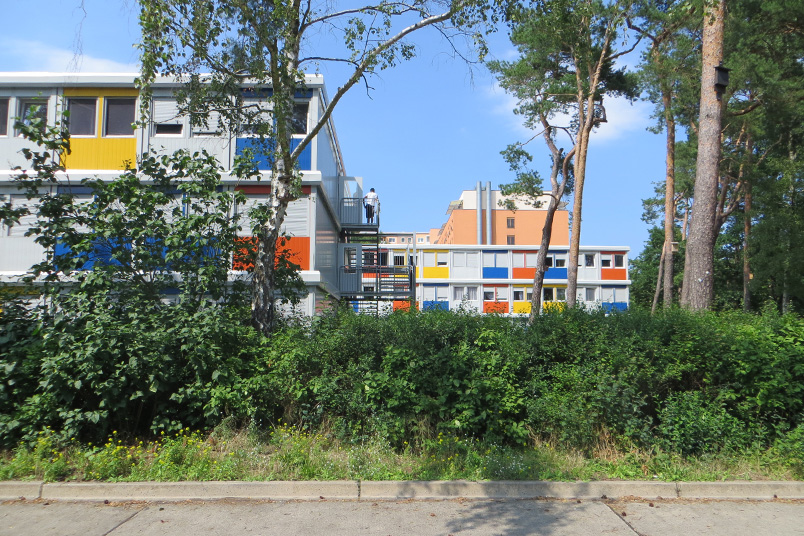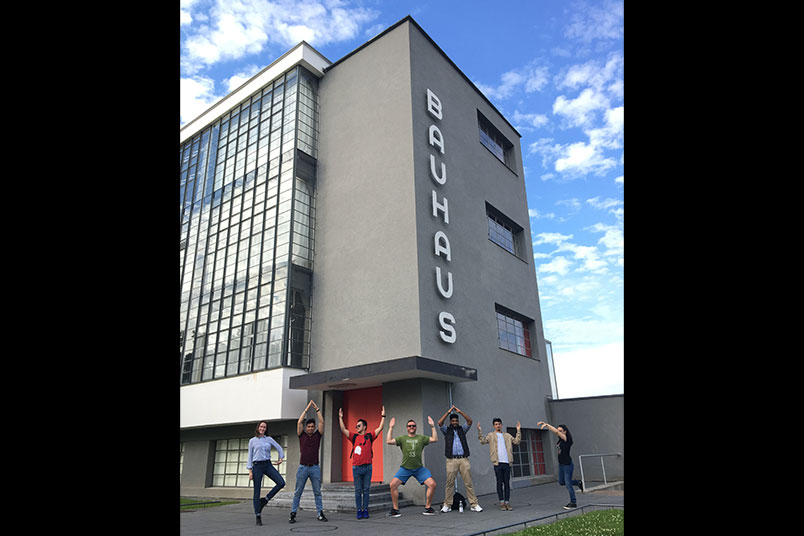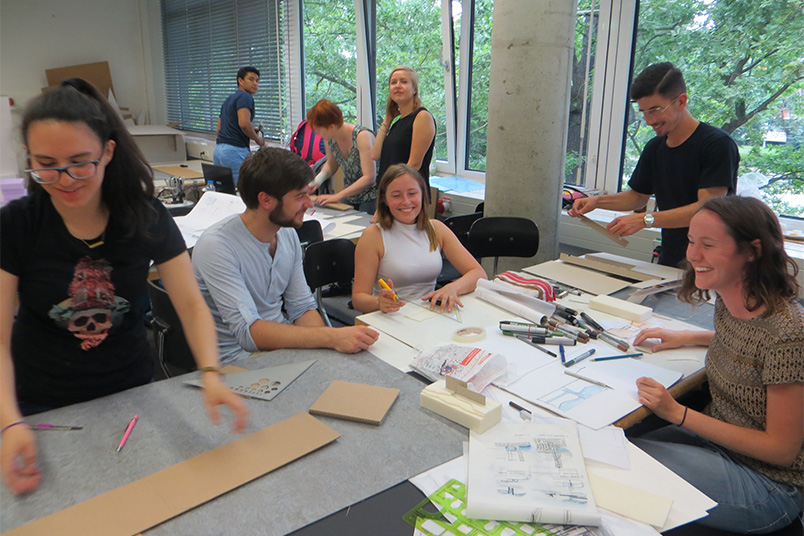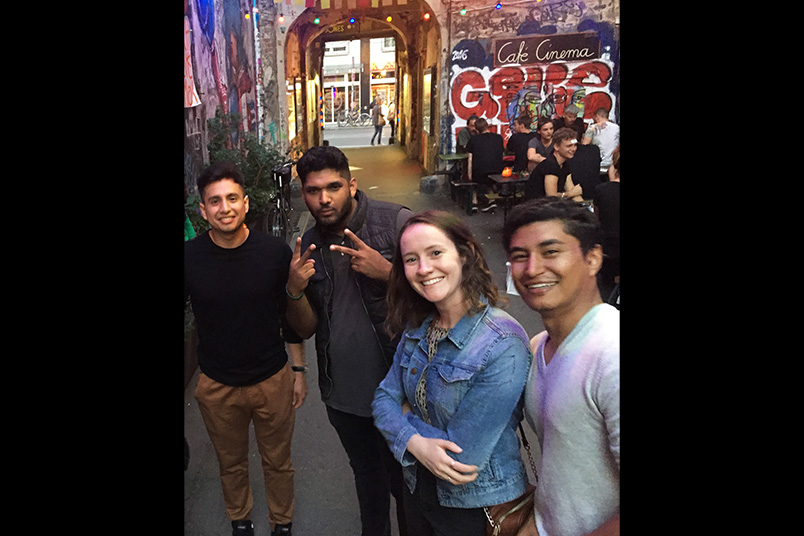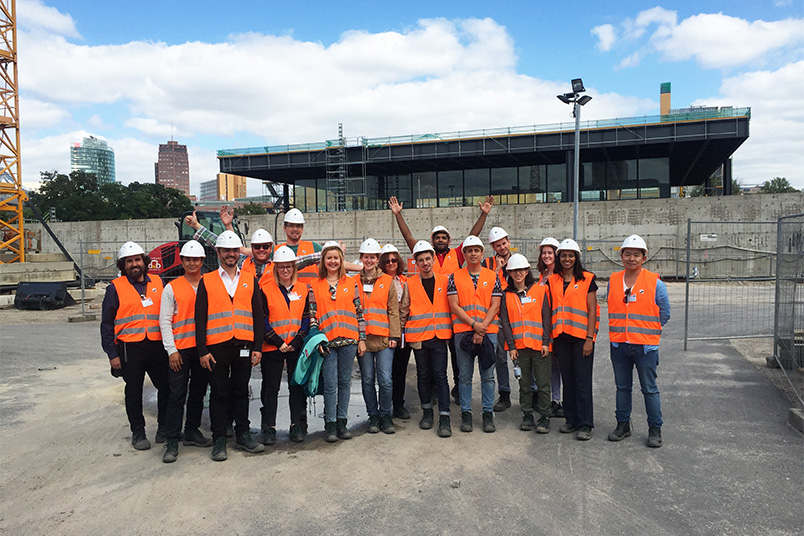
Rethinking Refugee Housing
August 10, 2017
Photo: NYIT students at the offices of David Chipperfield Architects.
Last month, nine students from the NYIT School of Architecture and Design traveled to Germany to study refugee housing in Berlin. Led by Associate Professor Farzana Gandhi, the international design workshop also included eight students from the Brandenburg Technical University (BTU) in Cottbus. In addition to visiting a refugee camp, NYIT students toured the Bauhaus in Dessau (an art school renowned for its approach to teaching architectural design), the New National Gallery by Mies Van Der Rohe, and the offices of David Chipperfield Architects.
The journey was the second half of an international collaboration with BTU students. In the spring 2017 semester, the group visited New York City and joined NYIT students in a design workshop that examined housing solutions for homeless populations as well as climate change displaced by such events as Superstorm Sandy in 2012.
The focus on refugee populations in Berlin gave NYIT students the unique opportunity to visit a “container village” in Berlin that was home to more than 600 residents from Syria, Africa, Turkey, Afghanistan, and elsewhere. The housing solutions in these makeshift environments consisted of shipping containers stacked three high, suitable for two people per unit, which included water and electricity.
“Seeing [refugee] living conditions makes you, as an architect, want to do more,” says Gandhi, who explained that refugees—including journalists, doctors, and engineers—can live in the camps anywhere from a few weeks to more than two years as they await paperwork confirming their identities.
Interacting with refugees directly was an incredible educational opportunity for the team. “Our students were exposed to socio-economic conditions and cultures that they wouldn’t normally encounter,” says Gandhi. “They rethink the norm and consider a variety of alternative solutions for housing.”
NYIT students drew on these experiences as they worked with their BTU peers in Berlin to create innovative design solutions for temporary, affordable housing for displaced, homeless, and migrating populations.
“Collaboration in a multicultural group invites countless iterations of ideas,” says Matthew Acer, one of the NYIT students who traveled to Berlin. “The BTU students were able to conceive of urban concepts and housing details that I was never exposed to before.” He expects this international trip to greatly influence his own professional work in the future.
But the key takeaway for Acer was realizing how easily preconceived notions disappear once you meet people face to face. “Once we encountered refugees from all over the Middle East, all preconceptions began to dissipate and we learned about the individual and their journey,” he says. “The experience was eye-opening.”
More Features

An Alumnus’ Commitment to the Environment
As an energy management graduate from New York Tech’s Vancouver campus, Jasdeep Gulati (M.S. ’22) is highly invested in educating people about environmental and climate sustainability.

Vancouver Faculty Win University-Sponsored Research Awards in New Program
The new Global Impact Research Grant (GIRG) program has been developed to keep Vancouver-based faculty connected to faculty and research projects being conducted on the university’s New York campuses.

Studying Climate Change One Degree at a Time
Junhua Qu (M.S. ’24) began her collegiate journey in Beijing. But, her interest in climate change took her to New York Tech’s Vancouver campus to study energy management.
